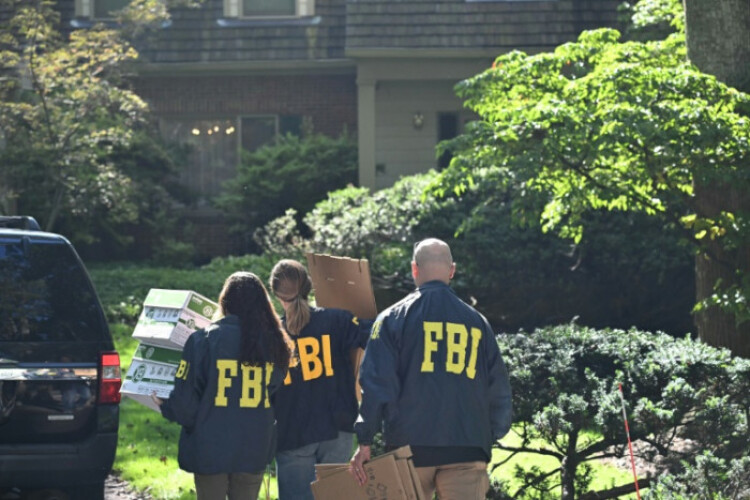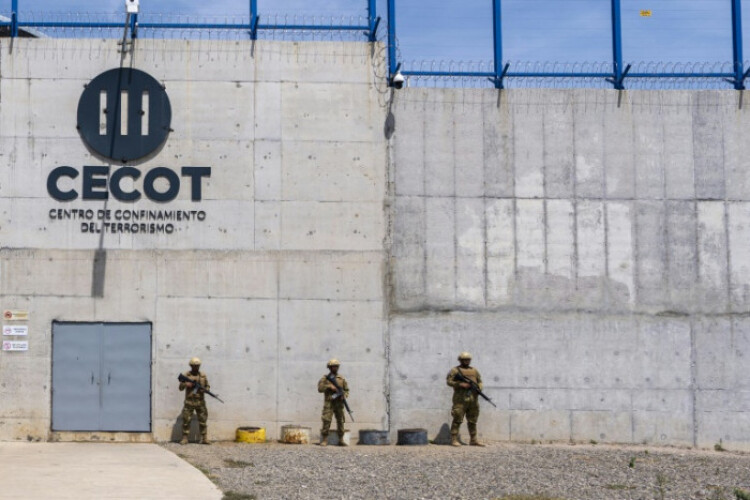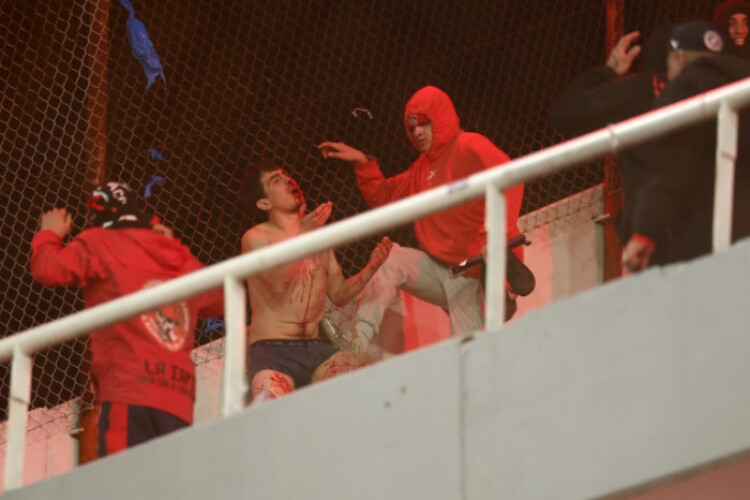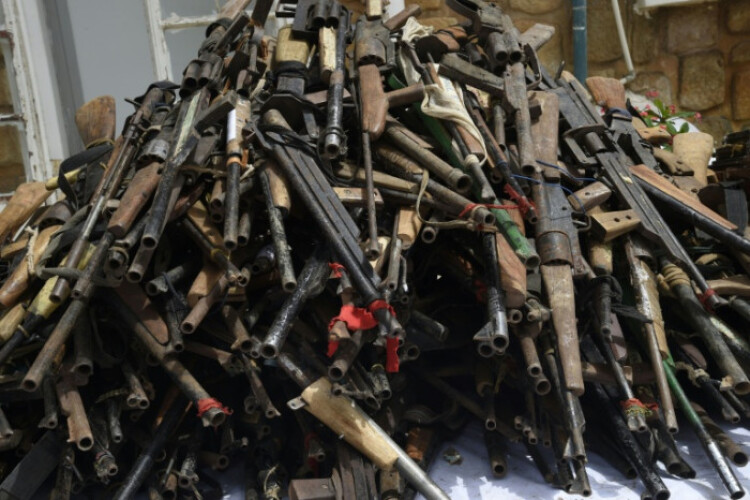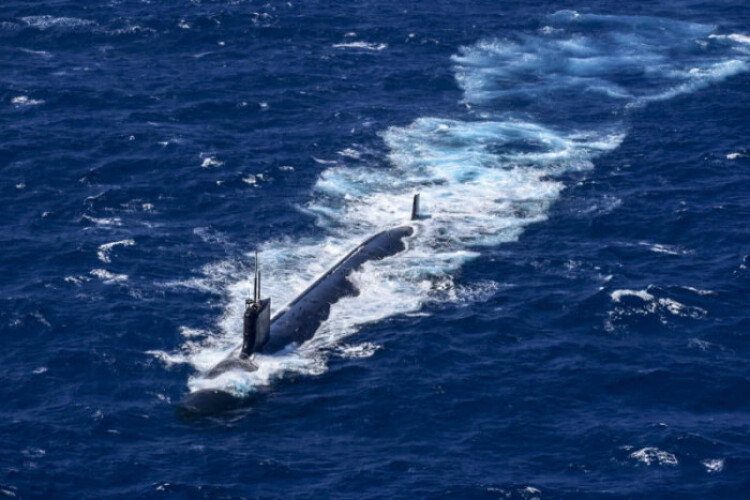
United States President Donald Trump said on his social media feed Friday that he had “ordered two nuclear submarines” to be repositioned in response to online threats from Russia’s former president, Dmitry Medvedev, a rare case of potential nuclear escalation between the superpowers.
Trump said he had ordered the submarines “to be positioned in the appropriate regions, just in case these foolish and inflammatory statements are more than just that.” He added: “Words are very important, and can often lead to unintended consequences, I hope this will not be one of those instances.”
Medvedev, who often serves as something of an online attack dog for the Kremlin, had said in a social media post of his own on Thursday that Trump should picture the apocalyptic television series “The Walking Dead” and referred to the Soviet Union’s system for launching a last-ditch, automatic nuclear strike.
Because nuclear submarine movements are among the Pentagon’s most closely held tactical manoeuvres, it will most likely prove impossible to know if Trump is truly repositioning the submarines or just trying to make a point.
But in Trump’s sudden and escalating confrontation with Russia over Ukraine, it is the first time he has referenced the US nuclear arsenal, much less threatened to reposition it. Trump said Thursday that he intends to impose new sanctions on Russia over its unwillingness to wind down its war in Ukraine, the latest step in his gradual shift toward a more antagonistic stance toward the Kremlin.
Trump said last month that he would give Russia 50 days to begin serious peace talks with Ukraine. The Russian response was to ramp up attacks, including one on Kyiv, Ukraine’s capital, on Thursday night that killed more than 30 civilians.
This week, Trump said his deadline was being shortened to 10 to 12 days, and Thursday he said he had decided to impose “secondary sanctions” on countries that buy Russian oil. That would include China, India and Turkey, all countries with which Trump has other ongoing negotiations.
Russian President Vladimir Putin, left, and US President Donald Trump hold a bilateral meeting at the G20 leaders summit in Osaka, Japan, on June 28, 2019. (Photo: Reuters)
Trump and Russian President Vladimir Putin have talked repeatedly by phone or secure video since the president took office, but they have not met in person. It is a meeting Trump has said is vital, suggesting nothing on Ukraine would be resolved until the two men hashed it out between themselves. But his tone about Russia has hardened, and his position on sanctions has reversed, in recent weeks.
Still, such public flexing of nuclear muscles is rare even for Trump, who last made explicit nuclear threats to Kim Jong Un of North Korea early in his first term in 2018. At that time, he said his “nuclear button” was “much bigger and more powerful” than Kim’s. That exchange ultimately led to a diplomatic opening to Kim, three meetings between the two leaders — and a complete failure of the effort to get the North Korean leader to give up his nuclear arsenal, which is now larger than ever.
But Russia is a different case, and Trump has often talked about the fearsome power of nuclear weapons, something he contends he learned about from an uncle who was on the faculty of the Massachusetts Institute of Technology. So, while Putin has made threats about putting nuclear forces on alert during the opening days of the Ukraine war and may have been preparing to use a tactical nuclear weapon in fall 2022 against a Ukrainian military base, the United States has never responded.
Russia's Security Council's Deputy Chairman Dmitry Medvedev attends a meeting of the Council for Science and Education at the Joint Institute for Nuclear Research in the Moscow region's city of Dubna, Russia, on June 13, 2024. (Photo: Reuters)
Medvedev is a good foil for Trump; he regularly issues threats against the United States but is essentially powerless. Trump has referred to Medvedev’s martial-sounding statements several times in the past week. It is unclear, though, why Medvedev’s mix of hyperbole, threat and trolling got under Trump’s skin.
As Trump was leaving the White House on Friday for a weekend in Bedminster, New Jersey, he was asked why he ordered a redeployment of submarines.
“We just have to be careful,” he said. “And a threat was made, and we didn’t think it was appropriate, so I have to be very careful. So, I do that on the basis of safety for our people. A threat was made by a former president of Russia, and we’re going to protect our people.”
It was not clear what kind of nuclear submarines to which Trump was referring, or how redeploying them would provide any significant additional protection. The United States has nuclear-powered attack submarines that search for targets, but it also has far larger, nuclear-powered and nuclear-armed submarines. Those do not need to be repositioned; they can reach targets thousands of miles away. In fact, moving them can risk exposing their position.
Kingsley Wilson, the Pentagon press secretary, referred all questions about Trump’s statement to the White House. A senior Western military officer with experience in the world of submarine warfare said he was not sure what tactical actions may have taken place. But he said that because submarines operate so stealthily, Trump was free to declare he was taking action, and the Russians would have to decide whether to believe him.
This article originally appeared in The New York Times.
Trump said he had ordered the submarines “to be positioned in the appropriate regions, just in case these foolish and inflammatory statements are more than just that.” He added: “Words are very important, and can often lead to unintended consequences, I hope this will not be one of those instances.”
Medvedev, who often serves as something of an online attack dog for the Kremlin, had said in a social media post of his own on Thursday that Trump should picture the apocalyptic television series “The Walking Dead” and referred to the Soviet Union’s system for launching a last-ditch, automatic nuclear strike.
Because nuclear submarine movements are among the Pentagon’s most closely held tactical manoeuvres, it will most likely prove impossible to know if Trump is truly repositioning the submarines or just trying to make a point.
But in Trump’s sudden and escalating confrontation with Russia over Ukraine, it is the first time he has referenced the US nuclear arsenal, much less threatened to reposition it. Trump said Thursday that he intends to impose new sanctions on Russia over its unwillingness to wind down its war in Ukraine, the latest step in his gradual shift toward a more antagonistic stance toward the Kremlin.
Trump said last month that he would give Russia 50 days to begin serious peace talks with Ukraine. The Russian response was to ramp up attacks, including one on Kyiv, Ukraine’s capital, on Thursday night that killed more than 30 civilians.
This week, Trump said his deadline was being shortened to 10 to 12 days, and Thursday he said he had decided to impose “secondary sanctions” on countries that buy Russian oil. That would include China, India and Turkey, all countries with which Trump has other ongoing negotiations.
Russian President Vladimir Putin, left, and US President Donald Trump hold a bilateral meeting at the G20 leaders summit in Osaka, Japan, on June 28, 2019. (Photo: Reuters)
Trump and Russian President Vladimir Putin have talked repeatedly by phone or secure video since the president took office, but they have not met in person. It is a meeting Trump has said is vital, suggesting nothing on Ukraine would be resolved until the two men hashed it out between themselves. But his tone about Russia has hardened, and his position on sanctions has reversed, in recent weeks.
Still, such public flexing of nuclear muscles is rare even for Trump, who last made explicit nuclear threats to Kim Jong Un of North Korea early in his first term in 2018. At that time, he said his “nuclear button” was “much bigger and more powerful” than Kim’s. That exchange ultimately led to a diplomatic opening to Kim, three meetings between the two leaders — and a complete failure of the effort to get the North Korean leader to give up his nuclear arsenal, which is now larger than ever.
But Russia is a different case, and Trump has often talked about the fearsome power of nuclear weapons, something he contends he learned about from an uncle who was on the faculty of the Massachusetts Institute of Technology. So, while Putin has made threats about putting nuclear forces on alert during the opening days of the Ukraine war and may have been preparing to use a tactical nuclear weapon in fall 2022 against a Ukrainian military base, the United States has never responded.
Russia's Security Council's Deputy Chairman Dmitry Medvedev attends a meeting of the Council for Science and Education at the Joint Institute for Nuclear Research in the Moscow region's city of Dubna, Russia, on June 13, 2024. (Photo: Reuters)
Medvedev is a good foil for Trump; he regularly issues threats against the United States but is essentially powerless. Trump has referred to Medvedev’s martial-sounding statements several times in the past week. It is unclear, though, why Medvedev’s mix of hyperbole, threat and trolling got under Trump’s skin.
As Trump was leaving the White House on Friday for a weekend in Bedminster, New Jersey, he was asked why he ordered a redeployment of submarines.
“We just have to be careful,” he said. “And a threat was made, and we didn’t think it was appropriate, so I have to be very careful. So, I do that on the basis of safety for our people. A threat was made by a former president of Russia, and we’re going to protect our people.”
It was not clear what kind of nuclear submarines to which Trump was referring, or how redeploying them would provide any significant additional protection. The United States has nuclear-powered attack submarines that search for targets, but it also has far larger, nuclear-powered and nuclear-armed submarines. Those do not need to be repositioned; they can reach targets thousands of miles away. In fact, moving them can risk exposing their position.
Kingsley Wilson, the Pentagon press secretary, referred all questions about Trump’s statement to the White House. A senior Western military officer with experience in the world of submarine warfare said he was not sure what tactical actions may have taken place. But he said that because submarines operate so stealthily, Trump was free to declare he was taking action, and the Russians would have to decide whether to believe him.
This article originally appeared in The New York Times.

